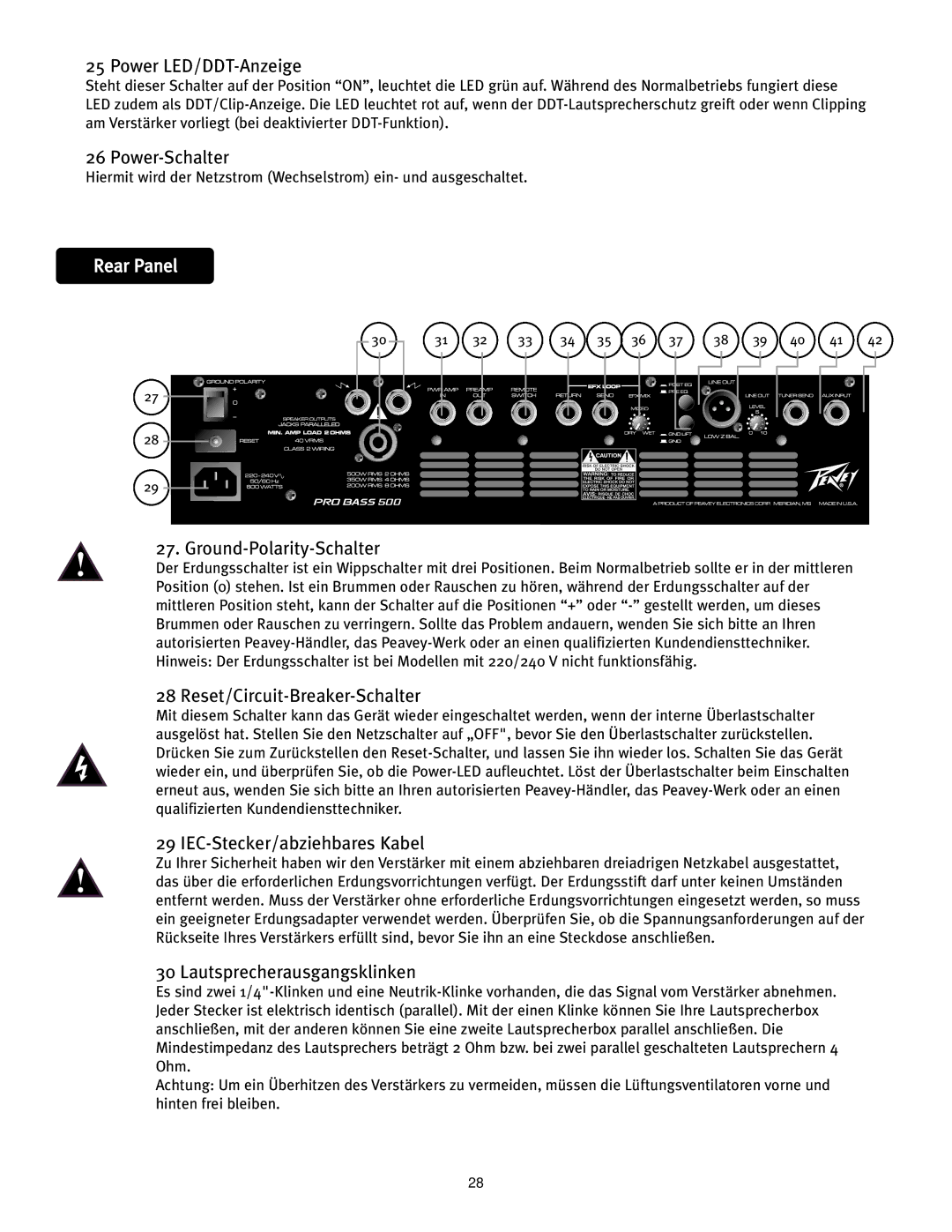500 specifications
The Peavey 500 is a powerful and versatile amplifier that has garnered praise from musicians and audio engineers alike. Known for its robust performance and reliability, the Peavey 500 is designed for a variety of applications, including live performances, studio recordings, and worship settings. With a blend of innovative technologies and practical features, this amplifier stands out in the crowded market of pro audio equipment.One of the key features of the Peavey 500 is its impressive power output. Offering substantial wattage, this amplifier is capable of driving even the most demanding speaker systems with ease. Competitively designed to handle both high and low frequencies, it ensures clarity and fullness of sound, making it an excellent choice for bassists and guitarists who require punchy, dynamic tones.
The Peavey 500 incorporates several exclusive technologies to enhance its performance. One such innovation is Peavey’s proprietary TransTube technology, which emulates the warm, harmonic-rich tones of vacuum tube amplifiers. This allows musicians to achieve a rich and vibrant sound without carrying the weight and maintenance demands of traditional tube amps.
In addition to its sound quality, the Peavey 500 is equipped with built-in EQ controls, allowing users to tailor their sound to suit different performance environments. Its comprehensive tone-shaping capabilities include bass boost, midrange adjustments, and treble controls, enabling precise sound customization. This flexibility is crucial for musicians who often perform in varied acoustic spaces.
Durability is another hallmark of the Peavey brand, and the Peavey 500 is no exception. Engineered with high-quality components and a rugged construction, this amplifier is built to endure the rigors of frequent transportation and heavy use. From the solid chassis to the robust input and output connectors, every aspect of the Peavey 500 reflects a commitment to long-lasting performance.
Furthermore, the amplifier features multiple input options, including standard quarter-inch jacks and XLR connections, ensuring compatibility with a wide range of instruments and audio sources. The versatility of the Peavey 500 is further enhanced by options for direct outputs, making it easy to connect to recording systems or external mixers.
Overall, the Peavey 500 stands as a testament to Peavey’s dedication to quality and innovation in the music industry. With its powerful output, advanced technologies, and user-friendly features, it continues to be a go-to choice for musicians seeking reliability and exceptional sound in their performances. Whether on stage or in the studio, the Peavey 500 delivers the performance that professionals expect and deserve.

